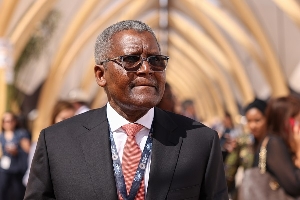Discussions have commenced between the government of Ghana through the Ministries of Agriculture, Finance and Trade, and a private sector consortium, with a view to reviving the sugar industry in Ghana.
This is great news for the country, as there is a substantial market for sugar both for consumption, and industrial purposes in Ghana, and the West African sub-region.
Currently, sugar production in Ghana is negligible, though this has not always been the case. In 1965, the Asutsuare sugar factory was set up with the capacity to crush 2000 tons of sugarcane a day. In 1965 again, a second production facility was set up in Komenda, to crush 1000 tons a day.
However, by 1981, both facilities had shut down due to inappropriate factory design, and poor management among other issues, including a shortage of primary raw material, sugar cane. It turns out, the plan to rapidly increase the acreage under cultivation of sugar cane, with an integrated irrigation scheme to guarantee the supply of sugar cane to the factories, never saw the light of day.
As things stand, sugar consumption in Ghana and the sub-region, is growing due in part to growing populations, and increasing use of sugar in food, and food products. Sugar consumption in Ghana alone is expected to exceed 850,000 tonnes annually by 2030. If Ghana is able to seal the deal and revive the sugar industry, dividends from the entire sugar value chain will lead to jobs in both agriculture and industry, and a new manufacturing sector, and an opportunity to be a major supplier of sugar and its derivatives to countries in the sub-region.
Globally, for hundreds of years sugar was a driver of international trade and development. Production and trading of the commodity was primarily responsible for the accelerated development of Europe through the Trans-Atlantic slave trade. People were taken from Africa and enslaved in the Americas, where they worked the sugar fields and mills. Sugar was then transported to Europe, sold, and the proceeds used to purchase consumer goods manufactured in Europe, which were then shipped to Africa to be exchanged for more people to be sent to work the fields in America, and the cycle continued for hundreds of years.
Currently, sugar is one of the most traded commodities in the world. Indeed, it is estimated that the industrial sugar market will be pushing USD45.6 billion by 2027. Even though international prices have been slightly unstable in the last few years, demand for sugar is still very strong and expected to stay strong in emerging markets and developing countries like Ghana.
The plan that is currently under discussion takes into consideration the entire value chain of sugar from plantations and out-grower schemes, through milling and refinery, to biofuel and sugar for food manufacturing and retail. To that end it is gratifying to know that government of Ghana is in talks to revive the industry, so it can meet the sugar needs of the country and the entire sub-region.
General News of Monday, 2 November 2020
Source: peacefmonline.com













